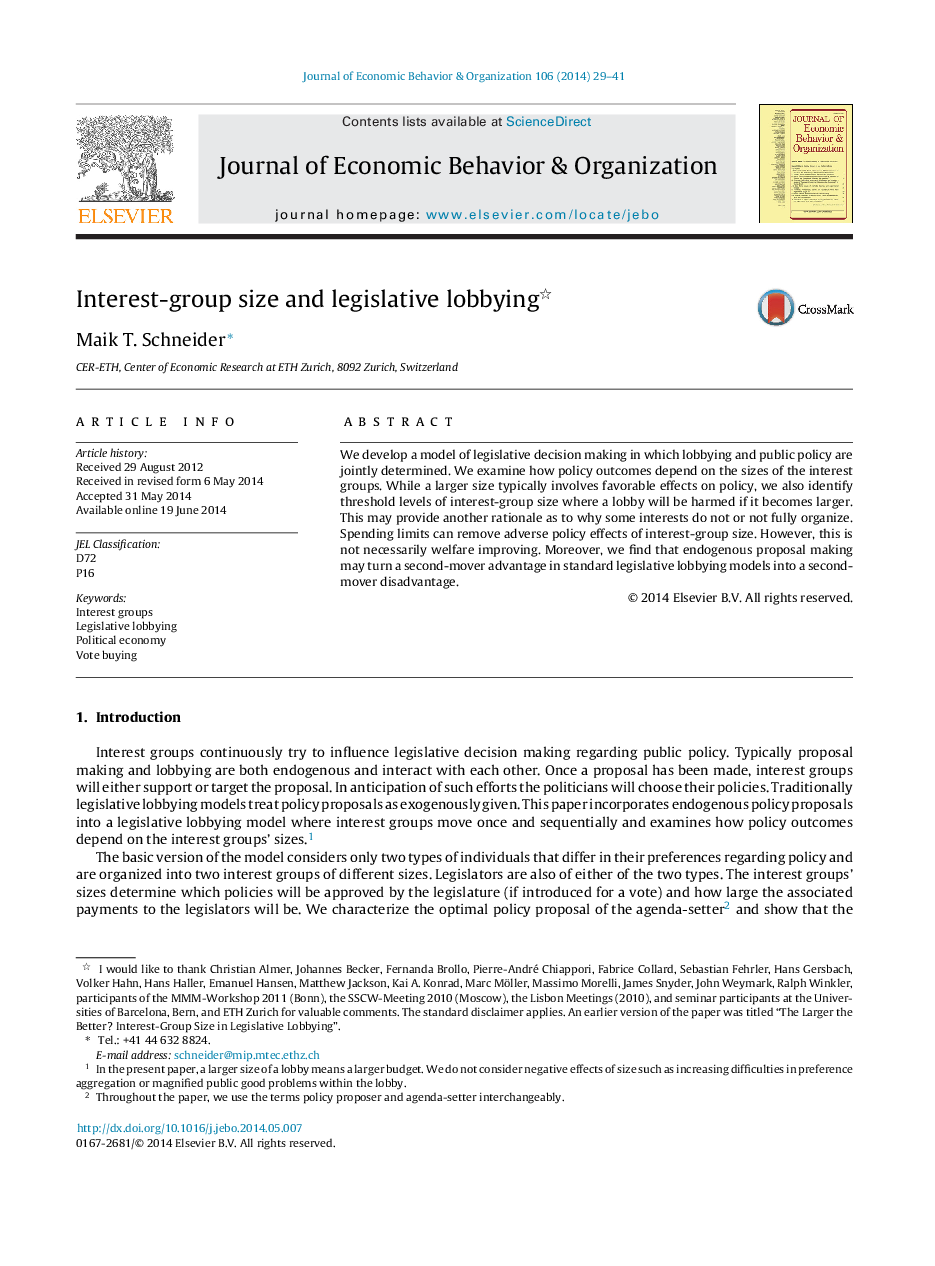| Article ID | Journal | Published Year | Pages | File Type |
|---|---|---|---|---|
| 7243446 | Journal of Economic Behavior & Organization | 2014 | 13 Pages |
Abstract
We develop a model of legislative decision making in which lobbying and public policy are jointly determined. We examine how policy outcomes depend on the sizes of the interest groups. While a larger size typically involves favorable effects on policy, we also identify threshold levels of interest-group size where a lobby will be harmed if it becomes larger. This may provide another rationale as to why some interests do not or not fully organize. Spending limits can remove adverse policy effects of interest-group size. However, this is not necessarily welfare improving. Moreover, we find that endogenous proposal making may turn a second-mover advantage in standard legislative lobbying models into a second-mover disadvantage.
Related Topics
Social Sciences and Humanities
Economics, Econometrics and Finance
Economics and Econometrics
Authors
Maik T. Schneider,
